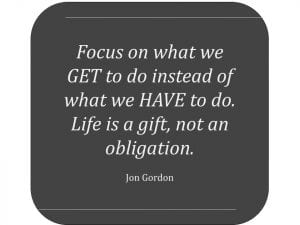Last week I wrote about the amazing Open Up Resources HIVE conference! I was buzzin’ from loads of learning. There was much that I didn’t write about, including some great take-aways from the keynote speakers that we were lucky enough to have at the conference. None of the five keynotes spoke about the EL Education curriculum specifically, but each sure did touch on how to be the best that we can be in our classrooms.
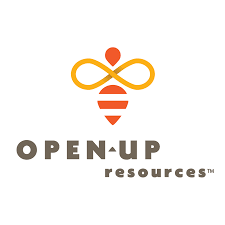
Let me start with Baruti Kafele, otherwise known as Principal Kafele. I don’t think I’m exaggerating when I say that Principal Kafele’s original slide deck presentation was about 200 slides long, and I don’t think I’m exaggerating when I say that we ended up seeing about 20 of those slides. You see, he did what any great presenter will do: he went off script. He had just experienced an encounter at an airport the night before, and it so impacted him that he looped the experience into his presentation. The short story: he came across a distraught passenger whose connecting flight had been cancelled. She was beside herself; he approached and spoke in a calm, soothing voice, just as he would for the students he serves. It took awhile, but he was able to bring some sense of calm to her, AND obtained a ticket so that she could get where she needed to go. The take-away? We can’t always bring our best selves, but when we can, let’s do it. He was in a position to bring his best self, and clearly someone needed his support. Our students always need us to be our best selves. Let’s take care of ourselves so that we can bring our best to them (more on that in a bit.)
Silly after-story, but I gotta’ tell it. The morning after hearing Principal Kafele’s keynote, I was out for a run when I was suddenly being assaulted by two dogs. Assaulted may be too strong a word, but they bit me (didn’t break skin), barked, and continued to chase me. My initial reaction was to yell and stomp at them. My yelling and stomping only seemed to escalate their behavior (so many parallels to the classroom!). In the middle of the chaos, Prinicpal Kafele’s voice, from just the day before, came into my head. Despite what my instincts were telling me (fight or flight), I allowed a sense of calm to take over. I quit yelling and stomping and found a calm voice. I looked at those dogs and in the calmest voice I could muster said, “OK guys, here’s the deal. I need to finish this run. You can come with me, or you can go back home, but no more biting or barking. Are you good with that?” Those two dogs looked at me, and by golly – they followed me for the remainder of that run: no biting or barking, just buddies keeping me company. A calm voice and calm demeanor, even in “trying” circumstances, are something to buzz about for sure!
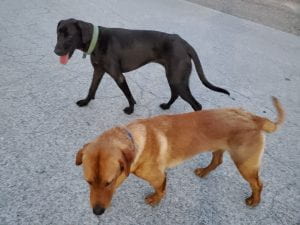
Latrayl Adams was another amazing keynote speaker from the HIVE conference. Latrayl talked with us about the importance of self-care in a presentation titled, “Self Care Isn’t Self-Preservation.” Yep, we hear it all the time – you need to take care of yourself. But who has time? Who has the money? What does it even mean to take care of yourself? Self-care can take on many different forms. We must find what works for us, and make it a priority.
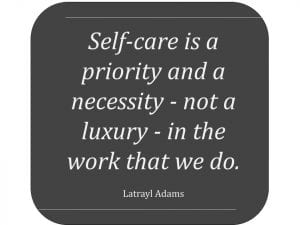
At the heart of taking care of yourself is knowing what your core values are. When you identify those, and hold true to them, self-care comes right along for the ride. Latrayl walked the HIVE participants through a core values exercise, which involved reviewing a list of values, as outlined by Elena Aguilar. Latrayl reminded us that, “Identifying your core values is crucial for developing self-care. Core values orient, drive, and anchor us.” The exercise goes like this: review the list of 100+ values, choose 10 that define you. Now, narrow that list of 10 down to five. Finally, narrow that list down to three – the three values that are YOU. The key when narrowing your list is to avoid over-thinking it. I’m jealous of people like my friend, Clint, who don’t need to go through this exercise to know what their core values are. Clint frequently mentions that he knows what his values are, and he always operates from that vantage point. It’s not as if I didn’t know what my values were, but going through this exercise was something I needed to do, and I found it incredibly freeing, insightful, and empowering. It has opened my eyes to knowing why I think, feel, act, and speak the way I do. I know why I get frustrated with certain words and actions from others. It doesn’t change a darn thing about what others say and do, but it assists me in removing frustration from those words and actions and just observe, removing judgment (not completely – that continues to be a work in progress!). This falls right in line with focusing on those things that are within our control.
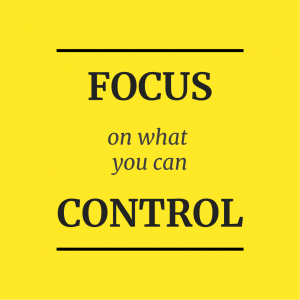
One of my top three values is Gratitude – it is strongly connected to some other values that didn’t make the “Top 3” cut. I’ve mentioned different ways that I express gratitude in other posts, and as always, I give credit for this expression to others. The resources that show up on my Power of Positive Resources page get all of the credit for the practices I have put into place. My two favorite ways to practice gratitude include: 1) Each morning before I get out of bed, I take five deep breaths. With each breath, I think of something I am grateful for; the idea is to think of five new things each day (not always accomplished, but it’s worth a try.) 2) Daily exercise – I get up at 4:00 a.m. to get a workout in before starting the day, during the school year… not so early during the summer! It’s a crazy-early time, but it works for me. If I wait until the end of the day, too many things get in the way (kids’ activities, meetings, etc.). Plus, I feel so much better for the entire day after getting an early workout in. The days that a workout is skipped leave me feeling tired, unmotivated, and frustrated; it’s just not worth the feelings that come with not working out. Latrayl’s presentation was a reminder that self-care can come in many different forms, it doesn’t have to cost a lot of money, and it is crucial to have in place so that we can bring our best selves to others.
About a month ago as I was out on a run, I saw Mike, one of the kindest people you’ll ever meet. He was taking a daily walk with his dogs (I see them fairly frequently) and I noticed he was taking pictures of flowers. He explained that it’s a new hobby of his – there is so much beauty surrounding us; he enjoys capturing it and looks forward to revisiting those photos this winter when we don’t get to see those flowers. That was enough for me to change my habit of taking a daily selfie after a run to taking pictures of the beauty around me. Thanks for the inspiration, Mike! He has given me yet another something to be grateful for.

First flower photo from Pomiller Park

Sunflower Field at Pomiller Park
Jose Vilson wrapped up the week of keynote speakers with a presentation titled, “Making Meaning of What We Learn and Teach.” Jose had LOTS to say, and was such an inspiration… and so calm!!! His one statement/challenge resonated with me more than the others: It’s OK to quote others, but you need to put your beliefs/learnings in your own words and actions. I love quotes and use them frequently. In fact, I began building a slide deck, which is now 50+ slides deep, where I add quotes that hold special meaning and could be used in a professional development session, a PLC meeting, or this blog. Jose’s challenge is to move beyond reading the quote and thinking, “Oh, that’s nice,” to really embracing the message that the quote holds. I’m putting that practice into play today, as I’m trying not to beat myself up for being a day late in publishing this post and instead focusing on the gift of the day. As Jon Gordon frequently reminds us:
